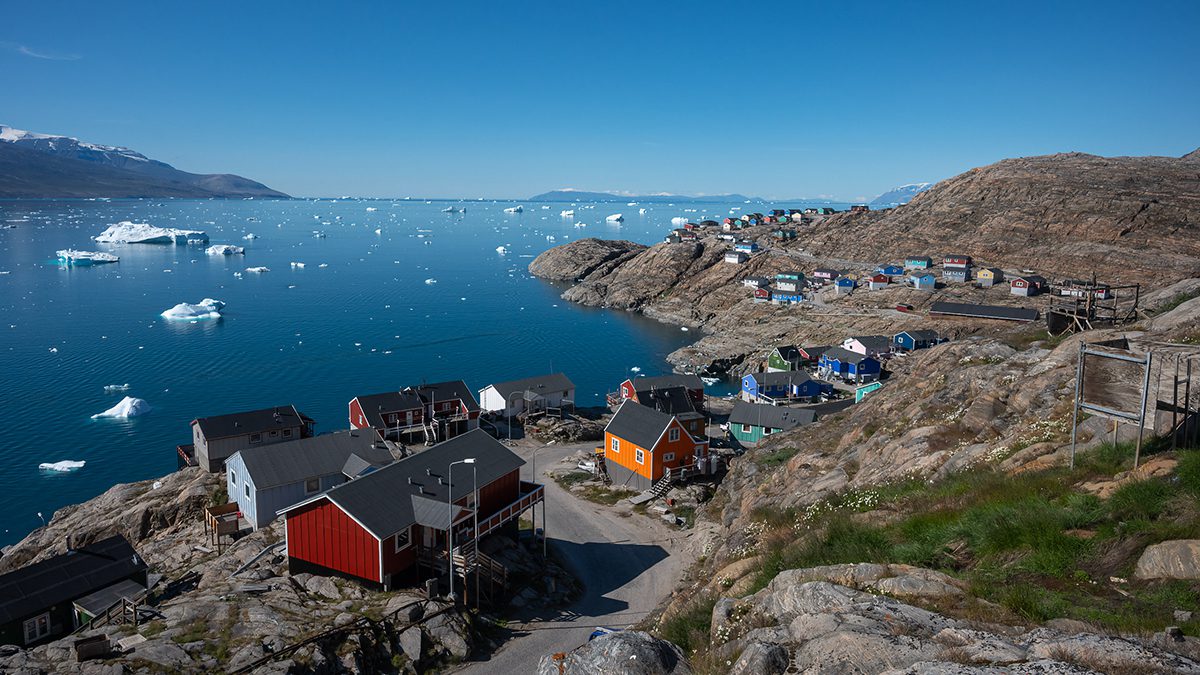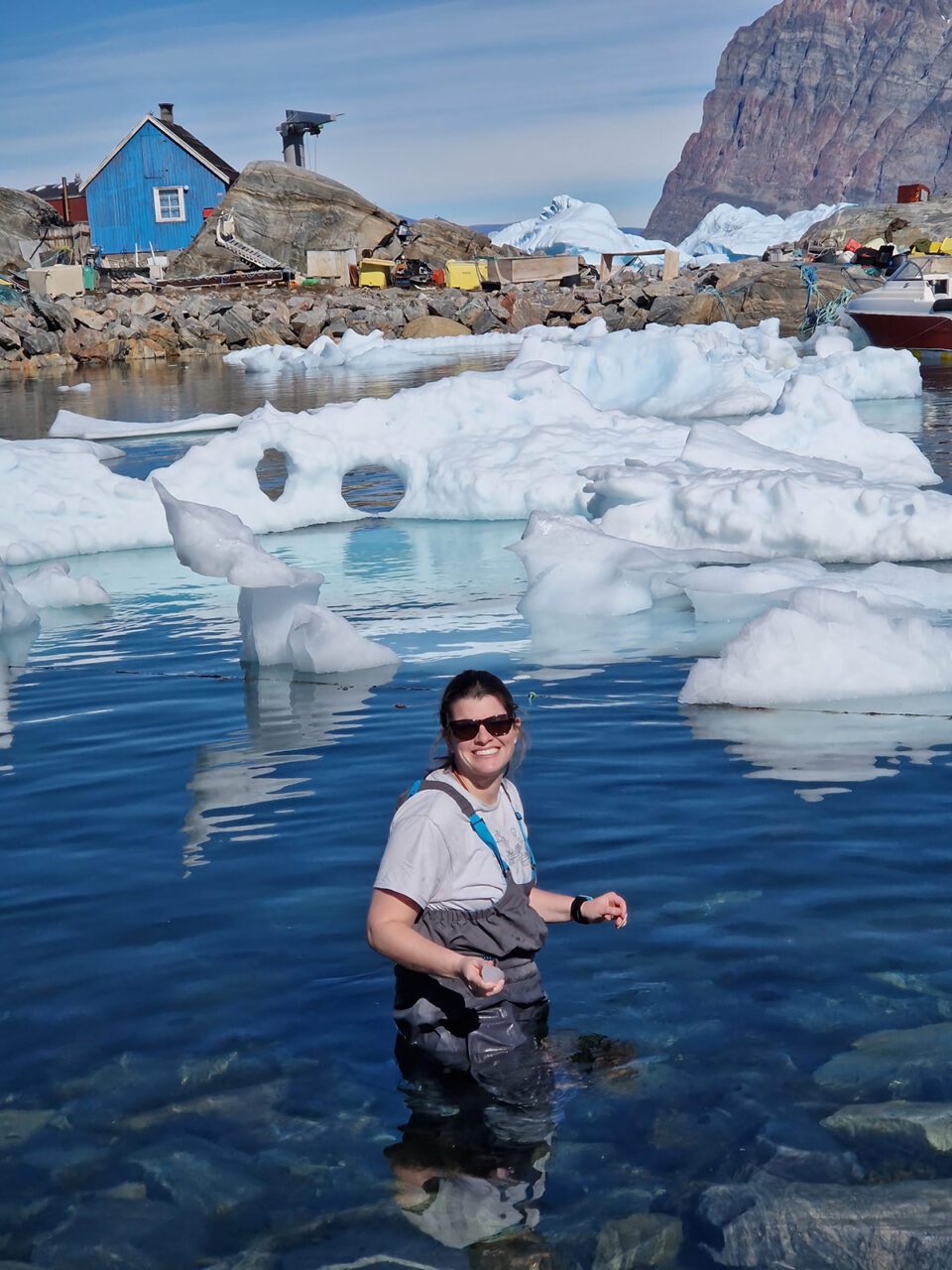
Fisheries researcher Samantha Farquhar has traveled far to learn more about industrial fishing and food security, and the related effects of a changing climate on peoples’ lives. Work that first requires building a level of trust.
Her travels have taken her from the University of Washington in Seattle to East Carolina University in Greenville, with stops in Nepal, Madagascar, Greenland and a small village in northern Quebec. Also included was a stop on the Outer Banks, where she worked as a seasonal fisheries technician with the Department of Marine Fisheries.
Supporter Spotlight
“I got to know a lot about what fishermen think of the regulations really fast,” Farquhar told Coastal Review recently.
It was, she explained, time well spent, especially for her chosen field of research.
“You go down to Wanchese, it’s their life. You have to really respect that when you’re doing research. You can’t just go in there asking a bunch of questions,” she said. “You have to take the time to build the right partnerships and develop trust.”
She was in Greenland this summer, spending most of July in Uummannaq, a town on the west side of the country. Although most of her work has been with fisheries, in this case she was working with Hurtigruten Expeditions, a Norwegian company that offers cruises to Greenland.

She was looking into the effects of climate change on the indigenous culture there.
Supporter Spotlight
“Greenland is one of the only countries that is (approximately) 80% indigenous people. It’s an indigenous-run country, which is pretty cool, but with strong ties to Denmark,” she said.
Farquhar was studying how climate change was affecting the use of the qajaq (pronounced kayak), which is the traditional kayak of the Inuit people of Greenland. Made of stretched animal skins over whalebone or driftwood, it is a long, narrow watercraft, that, because of its construction, is used only in relatively calm seas.

What Farquhar found was that days with conditions safe for qajaq use were becoming more infrequent.
“I can almost definitely say it’s harder for kayakers, than, say, 30 years ago,” she said. “A kayaker will tell me, ‘I will only go kayaking when it’s between zero and 0.5 meters of wave height. If it’s greater than 0.5 meters, it’s too wavy. I don’t feel safe going out.’”
Farquhar is in an ECU doctoral program administered by the Coastal Studies Institute on the ECU Outer Banks Campus that she described as unique in the world of academia.
“I’m in a PhD program called Integrated Coastal Sciences. It’s the only PhD program in the world that has this title,” she said, adding that trying to describe the program is difficult.
“It’s like coastal resource management, but more integrated,” Farquhar said.
“I have to understand the fishery science side of things,” she said, adding that her works demands an understanding of food security, food systems and how people obtain food within the food system. “So it’s really interesting.”
After five years of study, Farquhar expects to defend her doctoral dissertation next spring.
Aquaculture sans ocean
Farquhar, fresh out of college with an undergraduate degree in biology, began her career in Nepal, where there was opportunity, despite what she describes as a “really funny” experience, “because they don’t have an ocean.”
And it was, she said, a place where the economics of food security, society and fish intersect.
“It was an aquaculture project that was for women specifically, because in a lot of traditional Nepali societies, women are stuck in the household, and they don’t have a lot of options for economic development,” Farquhar said. “That led me to get into fisheries development … to see how fisheries could be tied to people.”
The societal aspects of fisheries became a frequently recurring concept in her work. She later spent nine months living in Madagascar on a U.S. government Fulbright Student Grant Program.
“I was working in a marine protected area,” she said, describing how it was managed by a local community, “small-scale fishers, traditional sailing vessels, that kind of thing.”
Beyond the managed area, industrial-scale fishing was permitted, but vessels from the European Union or Asian countries were entering the marine protected area. “They would get very upset,” Farquhar said. “They’d be like, ‘This boat is stealing all of our fish.’”
Often, industrial-scale fishing operations are described as “really bad for local communities, especially when the industrial fishing is by a different party and not the local community,” Farquhar said. But, empirical proof of harm is difficult to produce.
“If you think about it in terms of data, it’s really hard to prove that industrial fishing happening here is causing this household over here to lose out on meals and suffer,” she said.
Some of the difficulty in showing a link is in the recordkeeping, or lack thereof.
“There is no good long-term data for Madagascar,” Farquhar said. Even in developed nations, it can be difficult to show how food security and industrial fishing are interwoven in the local economy.
Because of COVID-19 travel restrictions, Farquhar was unable to return to Madagascar, but she did find a project in Canada, where she found, there was “much better data.”

The focus of her work in northern Quebec was in Kuujjuaq, an Inuit town on the southern side of the Hudson Straight. The town, with a population greater than 2,600 is the largest town in the Nunavik region of Quebec.
Unlike her work in Madagascar, Kujjuaq residents are developing an industrial fishing economy with the goal of benifitting the Nunavik region.
“The commercial fishery that they’re ramping up in the area is shrimp,” Farquhar said. “Shrimp is not a traditional food in the indigenous community that I’m working in. They like it, but it’s not like something that they’re (saying), ‘Yes, this is important to our culture.’”
What is important to the culture is Arctic char, a fish that looks a bit like salmon, although it has yet to catch on as an export commodity.
“It’s very important to them. It’s a really good-tasting fish. You can never find it in the United States,” she said.
The Kuujjuaq community has been fairly successful, too, exporting most of the shrimp to Asia, Farquhar said, adding although that, “they hit a bit of a bump during COVID.”
There may be a limit to how much shrimp can be harvested, however, if a healthy population of arctic char is to be maintained.
“Arctic char eats shrimp,” Farquhar noted. “So, if you’re fishing your shrimp population, is that going to affect your arctic char population?”
That remains unknown because the local ecosystem has not been well studied, something that, for Farquhar, makes working with the locals even more interesting.
“It’s very innovative work. The community is really interested in the work. They’re asking me questions to look at in my dissertation,” she said.







